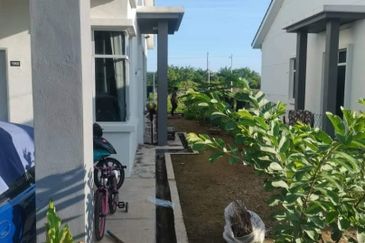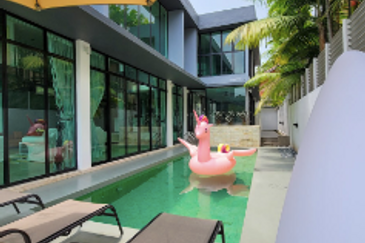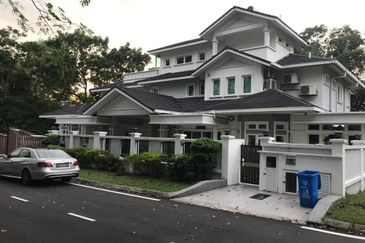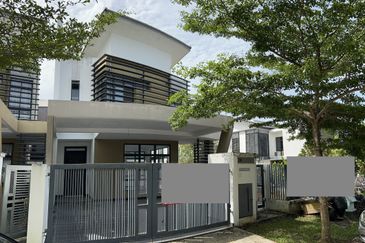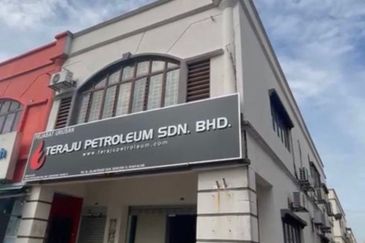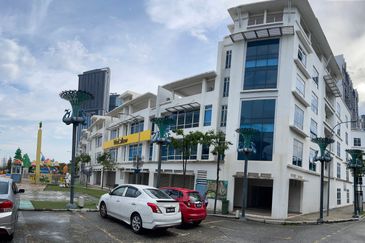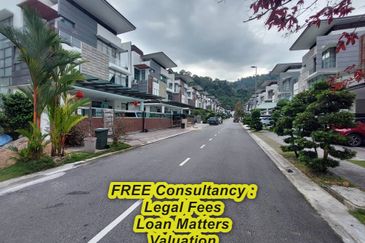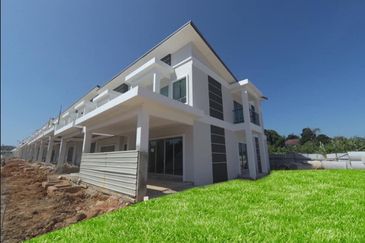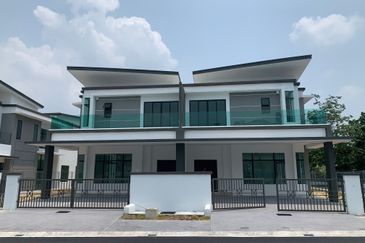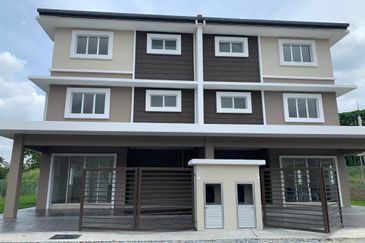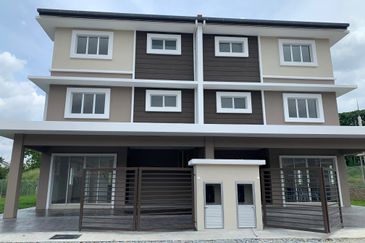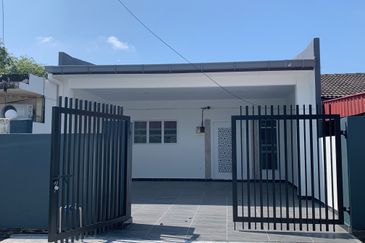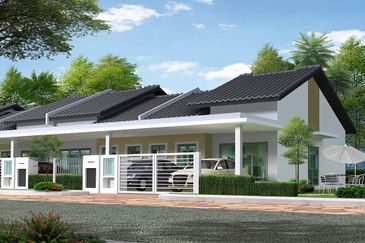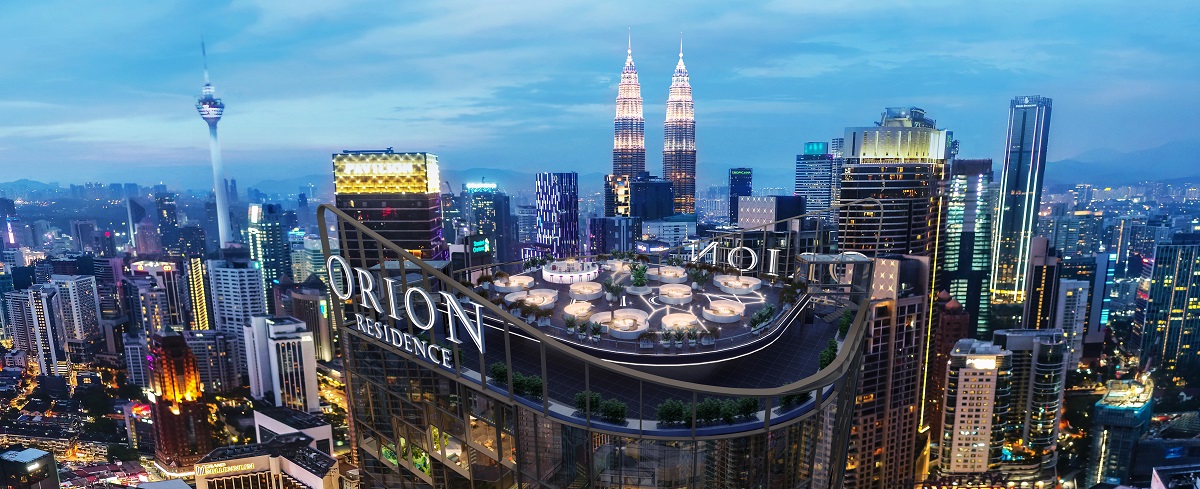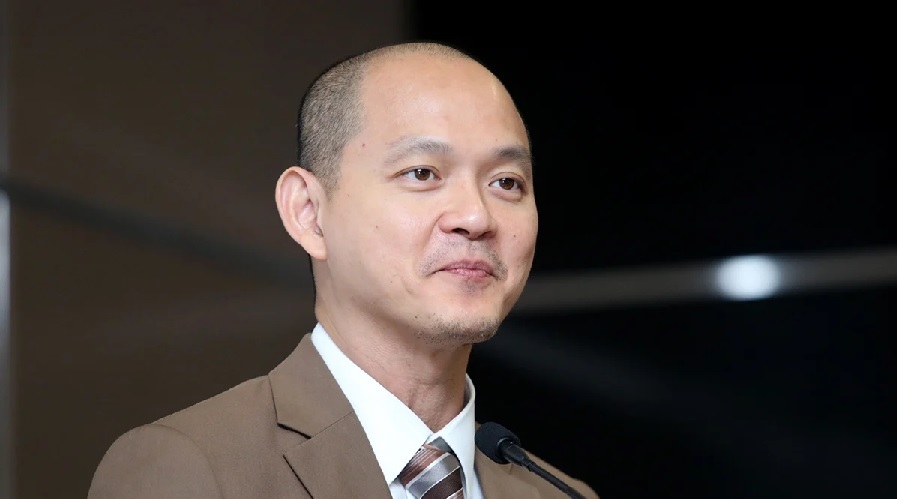
- There should also be serious consideration for a third bridge linking Malaysia to Singapore in anticipation of increased economic activity, assuming that the successful implementation of the SEZ will lead to a “second take-off” for this region.
A media statement by Dr Ong Kian Ming, a former deputy international trade and industry minister, on Dec 4, 2023:
The announcement of a Johor-Singapore special economic zone (SEZ) at the Joint Ministerial Committee for Iskandar Malaysia (JMCIM) on July 14, 2023 was greeted with excitement on both sides of the border. This committee, co-chaired by Economy Minister Mohd Rafizi Ramli, on the Malaysian side, and Minister for National Development Desmond Lee, on the Singapore side, proposed a number of areas of joint cooperation, including industrial development, tourism activities, innovation facilitation and improved connectivity.
The importance of this SEZ was re-emphasized at the leaders' retreat in Singapore on Oct 30, with a memorandum of understanding (MOU) planned for in January 2024 between both countries.
This is a list of 10 proposals, including what I hope are interesting details, to be considered by the Malaysian government, as part of the MOU to be signed in 2024.
1) Improving the physical connectivity between Johor and Singapore
Deputy Investment, Trade and Industry Minister and Member of Parliament for Iskandar Puteri Liew Chin Tong has written extensively about his vision for Greater Johor Bahru to be a second metropolitan driver of economic growth in Malaysia, where linkages to Singapore will be an important catalyst. The proposed ferry connections between Forest City in Johor and Raffles Marina near Tuas in Singapore, and also between Pasir Gudang and Changi, will not only improve connectivity between the two countries, but has the potential of creating new development hubs for manufacturing, logistics, and other related services. This would mean putting on the table development master plans in these areas, where the synergies and objectives of Johor and Singapore can be aligned. For example, an improved logistics hub for the automotive sector in Pasir Gudang could be paired with plans to develop warehouses near the Tanah Merah terminal in Singapore, so that high-end auto components can be flown out of Changi, while bulkier auto parts and vehicles can be shipped out from Johor.
There should also be serious consideration for a third bridge linking Malaysia to Singapore in anticipation of increased economic activity, assuming that the successful implementation of the SEZ will lead to a “second take-off” (borrowing Liew’s words) for this region.
2) Improving the digital connectivity between Johor and Singapore
In addition to the physical connectivity, there is much more that can be done to improve the digital connectivity between Johor and Singapore. One obvious example is to improve the flow of traffic at the Causeway and Second Link. Much praise must be given to Datuk Onn Hafiz Ghazi, the menteri besar of Johor, who has pushed for more immigration officers to be stationed in Johor Bahru to easy the traffic flow. Home Minister Datuk Seri Saifuddin Nasution Ismail, who oversees the Immigration Department, has responded to these calls, but more innovative solutions can be put on the table, especially in preparation of the opening of the Johor Bahru-Singapore Rapid Transit System (RTS) at the end of 2026.
One such solution would be the interoperability and mutual recognition of the National Digital ID (NDID) systems in both countries. Singapore already has Singpass, and Malaysia is developing its own digital ID, led by Mimos Bhd, and supported by the new Govtech Nucleus Unit, which is developing a number of government digital products, including the recently relaunched data.gov.my website. If the development of Malaysia’s NDID is done in cooperation with Singapore, specifically, the open government products (OGP) arm of GovTech Singapore, not only would the development process go smoother, but the issue of interoperability will be dealt with right from the start. A government-to-government (G2G) MOU between OGP and the Govtech Nucleus Unit would spell out the parameters of cooperation, including security protocols to protect the data sovereignty of both countries.
In addition, innovative products, which have been rolled out by OGP, including ParkingSG, can also be incorporated into the NDID ecosystem of both countries, where for example, a single-sign on via Singpass or MyLogin (my proposed name for the Malaysian NDID), can be used to access different parking apps in Singapore and in Johor Bahru (with the possibility of extending this service to other parts of Malaysia).
3) Introducing new areas of digital economy cooperation
It is encouraging that an MOU has already been signed between Enterprise Singapore (ESG) and SME Corp Malaysia during the leader’s retreat in October this year, although the details of this MOU have yet to be released. I also have been made to understand that ESG (the environmental, social and governance agenda) is in regular discussions with the folks at Iskandar Investment Bhd, which is under Khazanah Nasional Bhd, to increase corporate connections between Singapore and firms operating in the Iskandar region. I believe that much more can be done, especially in nurturing and developing the start-up ecosystem in Johor Bahru using the capital, experience and talent that currently exists in Singapore (some of whom have been imported from Johor and other parts of Malaysia).
Johor Bahru and Johor can be used as a testbeds for the testing and refinement of new tech applications, especially in areas where the market in Singapore is just too small. Instead of "software-as-a-service", Johor can be used as a "sandbox-as-a-service" location. One example would be to use the linguistic diversity in Johor to test out different apps in Malay, Mandarin, Bengali and Nepalese, just to mention a few. Johor also has lower customer acquisition cost, which means that getting people to on-board these platforms would be cheaper. There will also be lower reputation risks associated with such testing in Johor as opposed to Singapore. Another would be to deploy agritech solutions and innovations in different agriculture sectors in Johor.
Singapore may also want to test various halal digital investment platforms and services in Johor and even Malaysia, with the much larger Muslim population base. At the same time, Malaysia would want to tap into Singapore manufacturers and service providers in the halal ecosystem through the Halal Integrated Platform (HIP) developed by the Halal Development Corporation (HDC), an agency under the Ministry of Investment, Trade and Industry (Miti).
Incubators and accelerators such as Antler, Surge and JFDI.Asia, just to name a few, can be invited to partner with incubators and accelerators in Johor Bahru such as StartupJohor and Start IIX, to grow the very nascent ecosystem in Johor Bahru. Such partnerships can also be extended to incubators, which are currently based in Kuala Lumpur, such as ScaleUp Malaysia and Alpha Startups by 1337 Ventures. 42KL and 42 Singapore can also be invited to grow the coding talent pipeline in Johor as part of a larger talent development programme.
Other digitalisation tools and services including in the smart manufacturing ecosystem can also be introduced and tested in Johor. International smart manufacturing service providers such as Arcstone, which is based in the US, often set up their regional headquarters in Singapore, but would need to expand their used cases and customer base to places like Malaysia. Given that many manufacturers in Singapore also have operations in Johor, especially in Johor Bahru, what is needed is the ecosystem to facilitate the expansion of such products into the SEZ ecosystem. Of course, local Malaysian and Singapore software developers and systems integrators must also be given an opportunity to participate in this growing market, as the push for greater digitalisation and Industrial Revolution 4.0 standards continue to gain momentum.
One can even imagine joint incentives being given by the Malaysian Investment Development Authority (Mida) in Malaysia and the Economic Development Board (EDB) in Singapore to software developers to do their research and development (R&D), and to deploy their services into both markets in different sectors of the economy, such as manufacturing, food and beverages, financial services, edutech, agritech, and healthtech, just to name a few.
4) Introducing smart cities cooperation and innovations
One area of surprising exclusion in the discussions I’ve read thus far about the SEZ is in the area of smart city cooperation. I am certain that there are many elements of the Johor Smart City Blueprint 2030 which can involve cross border cooperation, including in the areas of mobility, waste management, renewable energy, smart buildings, recycling, crime fighting and e-government, using technology and other innovative solutions. This kind of cooperation can start with the Johor Bahru and Iskandar Puteri local councils, before expanding to the Kulai and Pasir Gudang local councils, all of which are found in the greater Johor Bahru vicinity.
5) Enhancing joint research between institutions of higher learning
The area of joint research between institutions of higher learning in both countries is also one that is underexplored. An area of potential collaboration could be in the realm of artificial intelligence (AI) and autonomous vehicle testing involving the Centre for Artificial Intelligence and Robotics (Cairo) at UTM, Skudai, and the NUS AI Lab. Tesla has been carrying out tests for autonomous driving in California, but has hit some snags in terms of regulatory approval. Malaysia and Singapore can potentially be an attractive co-location for Tesla to test out its AI on right-hand drive vehicles. This can take place in relatively controlled environments with low traffic volume such as Tuas in Singapore and certain parts of Iskandar Puteri in Johor before increasing the scope of coverage to more congested areas. The more chaotic driving patterns and road and highway systems in Johor Bahru will provide more varied data, while Singapore can act as a more predictable control. One can even envision testing to see if the AI autonomous driving can “smart” enough to adapt to driving patterns in both Malaysia and Singapore. The institutions of higher learning in both countries can provide the expertise and conduct specialised research for autonomous vehicles not just for a company like Tesla, but for other companies from, let’s say, China, which have invested heavily in the AI technology and are looking for new places of deployment.
Similar joint research projects can also be undertaken in areas such as agriculture. The Singapore Food Agency (SFA) and other government agencies are investing large amounts of funding as part of the 30 by 30 initiative — to provide 30% of Singapore’s nutritional needs locally by 2030. Some of these technological innovations in the food sector such as urban and rooftop farms will have to be scaled up, and Malaysia would be a good place to deploy prototypes at scale. Some of the universities in Malaysia including in Johor have access to underused land banks (Universiti Tun Hussein Onn Malaysia [UTHM] near Batu Pahat and the University of Pagoh are two examples I can think of), which would welcome research collaboration in the area of food security with Singapore agencies, entrepreneurs and institutes of higher learning.
Venture Capital funds in Singapore can also look for investment opportunities in the food security sector in Malaysia, which involves agritech and foodtech research with Malaysian collaborators. Tangram Asia Capital, a venture capital fund under NTUC Enterprise, is looking for such opportunities, but is focusing more on Indonesia as an alternative to Malaysia. In the context of the SEZ, a G2G MOU would be a good place to assure that such investments involving food security for Singapore would be protected and respected.
6) Joint investment pitches and projects
The "pitch" to jointly host Tesla (or any other autonomous vehicle initiative) in both countries is only one example of other possibilities of jointly "pitching" for other investments into both countries. One high-value target would be TSMC, the largest foundry company in the world. There have already been news reports that an affiliate of TSMC, Vanguard International, is looking to Singapore to produce 12-inch chips. Rather than competing with one another for this investment, why not make a joint-bid for this investment, which involves not just the foundry itself, but also the larger ecosystem that includes testing and packaging, chip design, logistics, and talent development? Mida and EDB can also talk to other customers of TSMC (including Tesla and Nvidia for example) to bring in more jobs, R&D, and activities as part of this larger ecosystem, which includes the testing of autonomous driving AI capabilities as one of the many activities which Malaysia and Singapore can jointly offer.
Another area of joint investment pitches is in the development of smart industrial parks by private companies of both countries. Singapore has developed industrial parks in Suzhou, China and in Bing Duong, Vietnam. There is no reason why joint industrial parks cannot be developed in Johor between, let’s say, Sunway and CapitalLand, for example. These industrial parks can be developed using energy-efficient centralised district cooling systems with 5G connectivity and supplied with renewable energy as carbon offsets to house smart factories and technology service providers that will set up shop in the parks because of the joint investment pitches mentioned above.
7) Renewable energy and related investments
There is ample capital in Singapore which is ready to be deployed into the renewable energy (RE) space around the region including in Malaysia. What Malaysia needs to do is to update our RE policies so as to encourage these investments in greater amounts. One possibility, for example, is to lift the foreign equity limit for some of the RE investments under the Large Scale Solar (LSS) programmes to beyond 49% for capital originating from Singapore sources under the SEZ. Another area of cooperation in the RE space is to align the policies in Malaysia so that floating solar farms, for example, can be installed in our dams which are part of the treated water catchment area. Singapore already has floating solar panels installed in its Tengah Reservoir. A joint investment by the two countries in a floating solar facility in the Sultan Iskandar Reservoir near Pasir Gudang, for example, can expedite the updating of such regulations in Malaysia.
8) Introducing education exchanges at different levels
While many Johorians make the daily commute to study in primary and secondary schools in Singapore, the number of Singaporeans who do the same commute to Johor Bahru are very few, with the exception of some who are attending expensive private schools in Johor Bahru, which are still more affordable because of the exchange rate compared to similar schools in Singapore.
It would be fruitful from a people-to-people perspective if educational exchange programmes at the primary and secondary school levels can be introduced between students from Johor and Singapore. These programmes don’t have to be very long to begin with, perhaps starting with a weekend activity exchange, but can be gradually enhanced over time depending on the progress of such exchanges. These exchanges should not necessarily involve the elite schools in Johor or Singapore but should involve the more "normal" schools, so that understanding of cultures and experiences can be inculcated at a younger age among the students who will have less opportunities to interact with one another in a meaningful manner at an older age.
9) Expanding the care economy ecosystem
With the populations of both countries rapidly ageing, demand for care services has and will continue to grow. My colleague, Liew, has been a strong advocate for more attention to be paid to the care economy in Malaysia involving training the workforce that will have to care for the rapidly growing number of senior citizens and the development of services and facilities to serve this market. The SEZ can cater to this care economy not just in the provision of talent, services and facilities but in the area of innovation and technology as well. The development of technologies which are senior citizen-friendly — simpler use interface and login procedures with larger font sizes and audio capabilities — is one such area. The development of new infrastructure which are senior citizen friendly including toilets, retail spaces, and medical facilities would be another.
Obviously, pre-emptive actions need to be taken so that Johor Bahru isn’t seen as a "dumping" ground for Singaporean parents whom some of their kids no longer want to take care of. Singapore already has the Maintenance of Parents Act 1994 which allows parents to claim maintenance from children who can provide for them, financially. The larger care ecosystem should have more robust safeguards to prevent children from placing their parents in aged care facilities across the border and then refusing to pay for their monthly upkeep after some time.
10) Co-organising and co-branding tourism events
Event based tourism is an important generator of economic activity for Singapore and to a lesser extent Johor. If a more holistic strategy of planning, marketing, and branding event tourism “packages” involving Singapore and Johor, there can easily be multiplier effects in terms of tourism activities. Instead of having six Coldplay or Taylor Swift performances in Singapore and only one performance each in Kuala Lumpur, why not have two performances in Johor Bahru and five performances in Singapore instead? The economic multiplier in Singapore will hardly be affected by one less performance, while the Johor Bahru economy would receive a significant boost. Two country “VIP” ticket packages (including hotel and transportation services) could also be sold to superfans from around the region and the world who would pay top dollar to watch shows in both Johor Bahru and Singapore.
The tourism and sports bodies of both countries could also work together to plan and brand other smaller events. The Singapore Writer’s Festival, which started in 1986, and the Singapore International Film Festival, which started in 1987, could be accompanied by smaller versions in Johor Bahru. Music and cultural festivals in Singapore can be co-branded with cultural festivals not only in Johor Bahru but in secondary cities like Kluang, Muar, Batu Pahat and Mersing. My colleague, Wong Shu Qi, the Member of Parliament for Kluang, organised a successful Pesta Kluang or the Kluang Festival in 2019 featuring cultural and music performances, food and sporting activities, and walking tours of the historic parts of town. With some guidance and funding, this could be replicated in other parts of Johor. With Singapore’s marketing prowess, the number of international tourists to such festivals can be significantly increased over time. Other co-branding and co-organised events would include “Amazing-Race” type competitions in Singapore and Johor Bahru, a series of marathons, duathlons, triathlons, ultramarathons and trial runs in Singapore and different parts of Johor, and semi-professional badminton competitions on a circuit that would over Singapore, Johor Bahru, and the secondary cities in Johor, just to name a few.
Johor-Singapore Chamber of Commerce
Lastly, I want to throw out the idea of a Johor-Singapore Chamber of Commerce, which aims to gather Singaporean companies which have invested in Johor. These companies would benefit from having an organisation to oversee their investment interests. This is not just for the benefit of the SEZ, but as a confidence building measure or prelude to the creation of a Singapore-Malaysia Chamber of Commerce in Malaysia to represent the interest of the Singapore business community in Malaysia and a Malaysia-Singapore Chamber of Commerce in Malaysia to do the same for the Malaysian business community in Singapore.
Even if these proposals do not make it to the SEZ MOU in January 2024, I hope that they can be considered for the next leaders’ retreat in 2024, which will take place in Malaysia. This will likely be the final leaders’ retreat for Prime Minister Lee Hsien Loong before he steps down to allow Lawrence Wong to lead the PAP into the next general elections, due by 2025. This will be a good legacy to leave behind after 20 years at the helm as the prime minister of Singapore in terms of bilateral relations and a good start in terms of bilateral relations of the premiership of Datuk Seri Anwar Ibrahim.
Looking to buy a home? Sign up for EdgeProp START and get exclusive rewards and vouchers for ANY home purchase in Malaysia (primary or subsale)!
TOP PICKS BY EDGEPROP
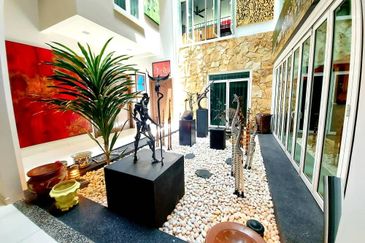
KGSAAS Golf Club, Seksyen 13
Shah Alam, Selangor

